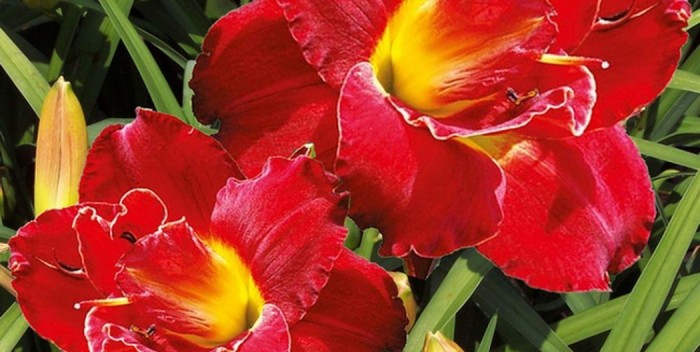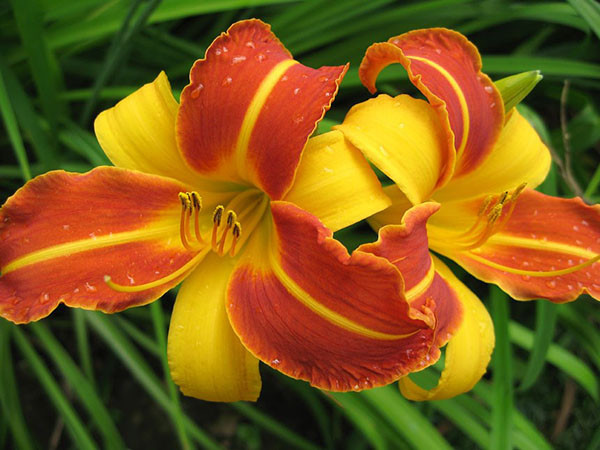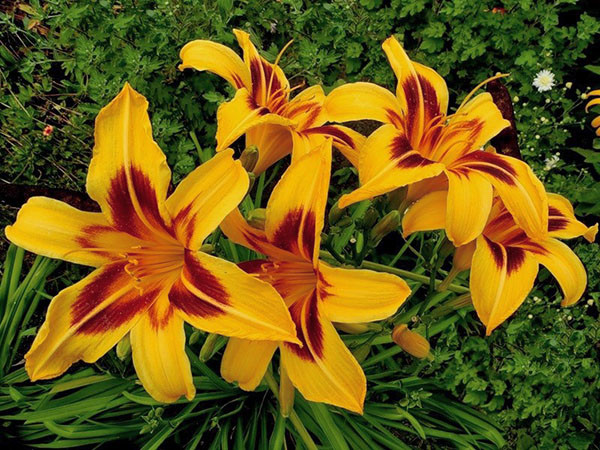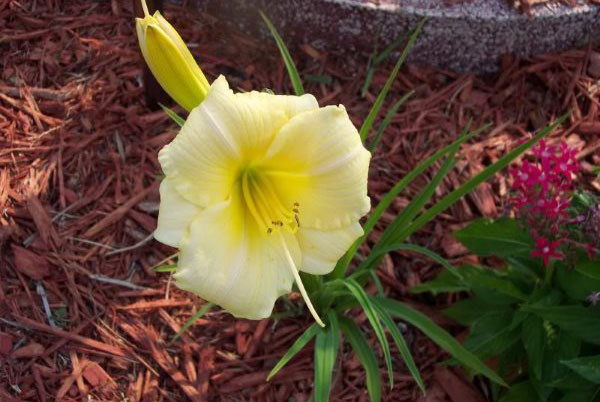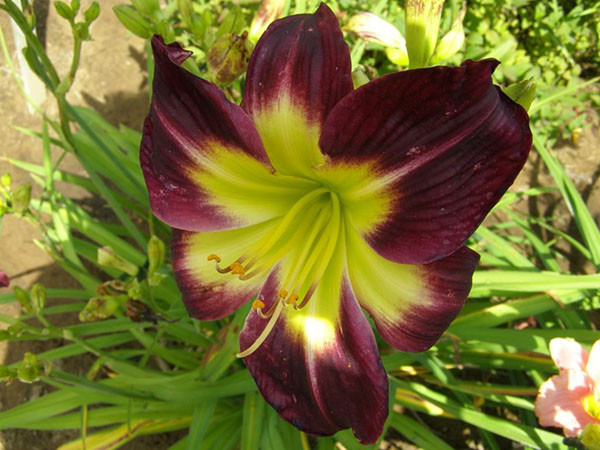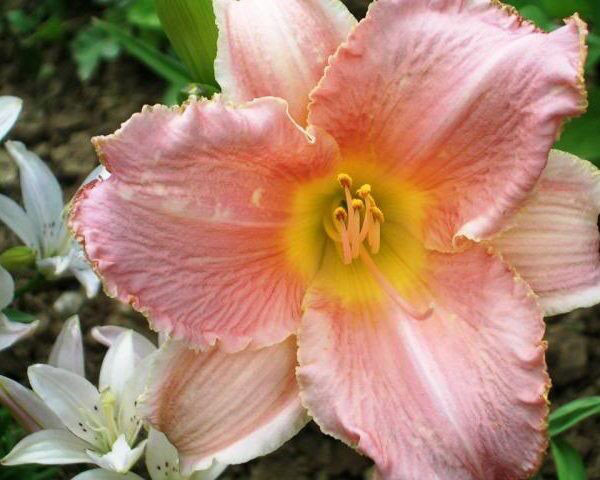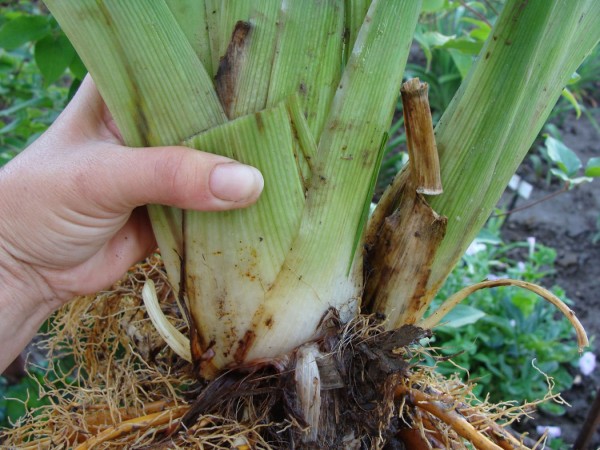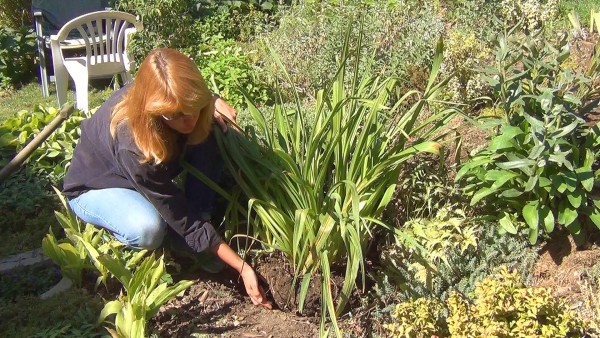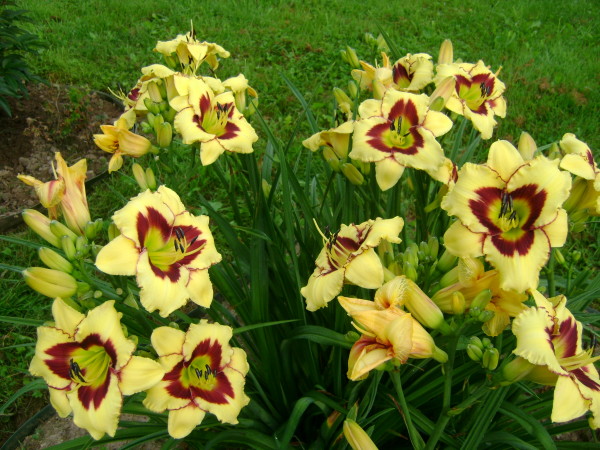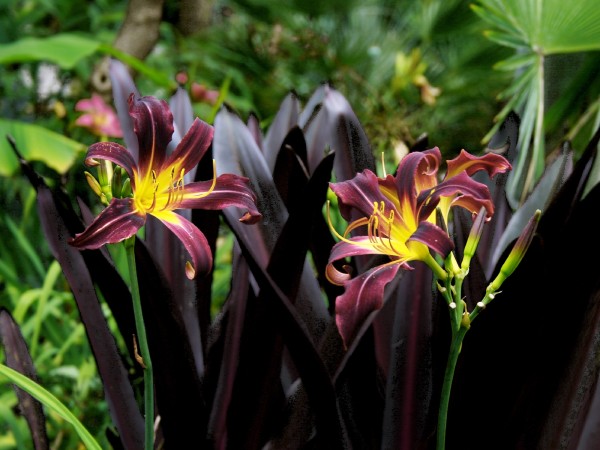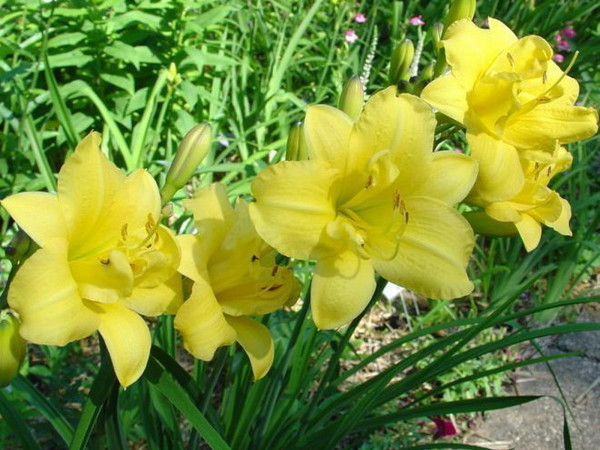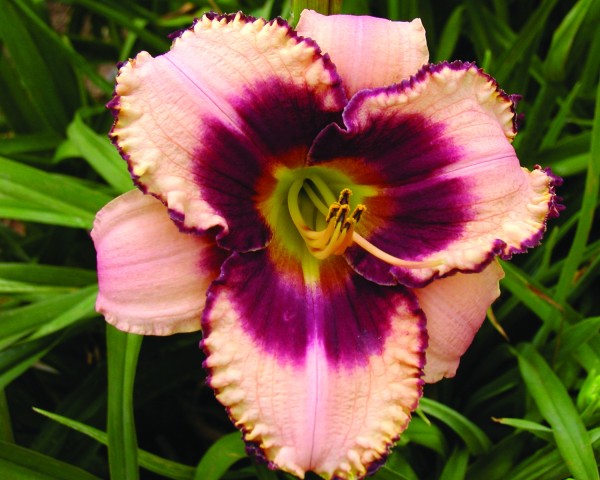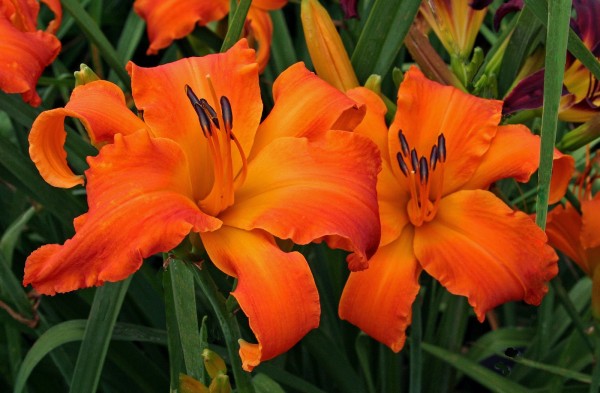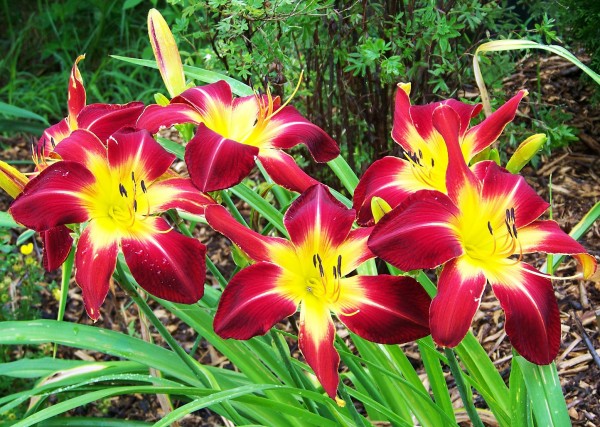Daylilies: planting and care
Daylilies belong to those few flowering plants that can grow in one place for many years in a row. Today, many varieties of this plant of various shapes and colors have been bred. If desired, daylilies can be grown on their own and admire this beautiful flower all summer long.
Daylily varieties
Thanks to the efforts of breeders, from not the brightest and most spectacular wild daylilies, it was possible to obtain many beautiful plants that are much superior to their ancestors in terms of flowering duration, brightness of shades and a variety of forms. Among the most beloved by gardeners varieties this flower includes:
- The daylily variety Frans Hals is distinguished by its bright yellow natural color, which changes from a rich orange tone to yellowish green. The diameter of the flowers of this variety is about 15 cm, and the shoots grow up to 1 meter in height.
- The Bonanza variety has yellow flowers with a bright red dusting in the center of the corolla of a wine shade. It is distinguished by its resistance to drought and ease of maintenance. It also perfectly tolerates frost and pest attacks.
- Longfields Pearl begins blooming in August and finishes in October. In appearance, it resembles lilies of a yellowish cream color. The diameter of a wide cone-shaped flower is about 10 cm.
- The Night Bacon variety has an unusual purple-wine color with a yellowish core. Its spectacularly colored flowers bloom up to 8 cm and have a classic shape. In care, this variety is unpretentious and feels great in bright light.
- The Divas Chois variety is also very similar to the lily. Its petals have a delicate creamy color and add a resemblance to a garden lily. The flower petals are corrugated at the edges. Their diameter can be up to 17 cm.
Planting daylilies
Time for landing this plant should be chosen according to the climate conditions. When winter comes early, it is better to do this in spring, since the plant needs a month for good rooting. In general, daylilies can be planted from spring to autumn. Experienced gardeners do this either in May or August.
Before planting, the planting material must be soaked in ordinary water or weak in a solution of mineral fertilizer to revitalize the root system. After that, inspect the roots, remove the damaged ones, and shorten the rest to 20 cm in length.
For planting, make a hole 30 cm deep, place a peat-sand mixture with humus on the bottom and a fertilizer containing potassium and phosphorus on top. Place the plant on top, spreading the root system and cover it halfway with earth. After that, pour well, pouring water to the edges of the hole. Only then completely cover the hole with earth. Deepen the root collar by 2-3 cm and no more, otherwise the plant will stop growing. When properly planted, the moisture that the plant has received during this procedure will be enough for good rooting.
Daylily care
For good development, the plant is important abundantly and often to water... In this case, it is important that the moisture completely saturates the soil. Water the daylily under the root so that the water does not touch the delicate petals of the flower. In hot weather, provide the daylilies with sufficient moisture. To do this, water them every other day. This will ensure the development of large buds. The best time to water is in the evening. Then, in the cool night, the plant will grow rapidly.
Daylilies feel great without fertilization, but their use will only benefit the plant. It will begin to grow rapidly and bloom continuously. Use fertilizers with potassium and phosphorus for this and combine this procedure with loosening the soil.
The first time follows feed daylilies in the spring by simply spreading dry granules under the bushes. At the beginning of the active growth phase, add urea or nitrate. And during the budding period, feed the daylilies with a mullein. A month after flowering, add ash or superphosphate to prepare for winter.
In autumn, the plant should be cut, first only the peduncles, and then the entire aerial part, leaving only young shoots. For the winter, mulch daylilies with straw, needles, or leaves.
Daylily transplant
This manipulation is necessary every five years so that the flowers do not become smaller. The plant tolerates transplanting well, so it can be carried out in any season, but the best time is from late April to mid-May.
Dig up the entire rhizome, carefully examine it and, if necessary, divide it into several parts. After this, the delenki must be planted in the prepared wells in the way already described above. Plants that have developed roots when planted will begin to bloom in the same year, and with a weak root system, flowering will occur the next year.
